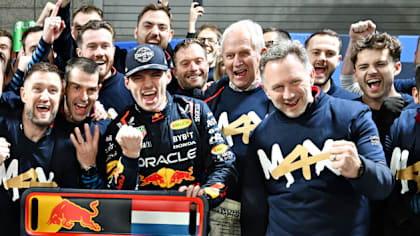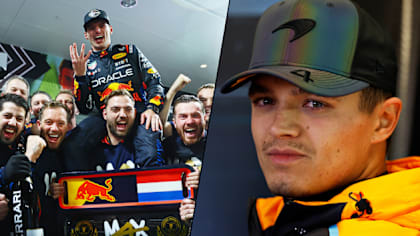
Technical
TECH INSIGHT: How Ferrari, Mercedes and Red Bull solved the Baku wing conundrum
Share

Azerbaijan is home to the world’s fastest street circuit – an exhilarating blend of flat-out blasts and tight and technical turns. How did the top three teams adapt last weekend? Mark Hughes and Giorgio Piola explain…
Ferrari, Mercedes and Red Bull each approached the Baku rear wing conundrum differently last weekend. It’s a track with a uniquely conflicted demand; big wings generating maximum downforce would be ideal for the tight Monaco-like middle sector of the lap, but tiny Monza wings would be best for the long flat-out stretch from Turn 16 down to Turn 1 which, at 2km, is the longest flat-out stretch the cars see all year.
The optimum point of rear wing downforce will be different for each car, according to how much power it has, how much drag is carried, what the aero balance between front and rear can be and so on.

But Red Bull, as the least powerful of the top three cars, went with its traditional Baku solution of a very flat but conventional main plane (see above). It would have been helped in this by their high-rake design concept. This means the underfloor will be creating a lot of downforce and also that the wing main plane, although flat in isolation, will be presented to the air with an angle of incidence because of the rake of the car itself.
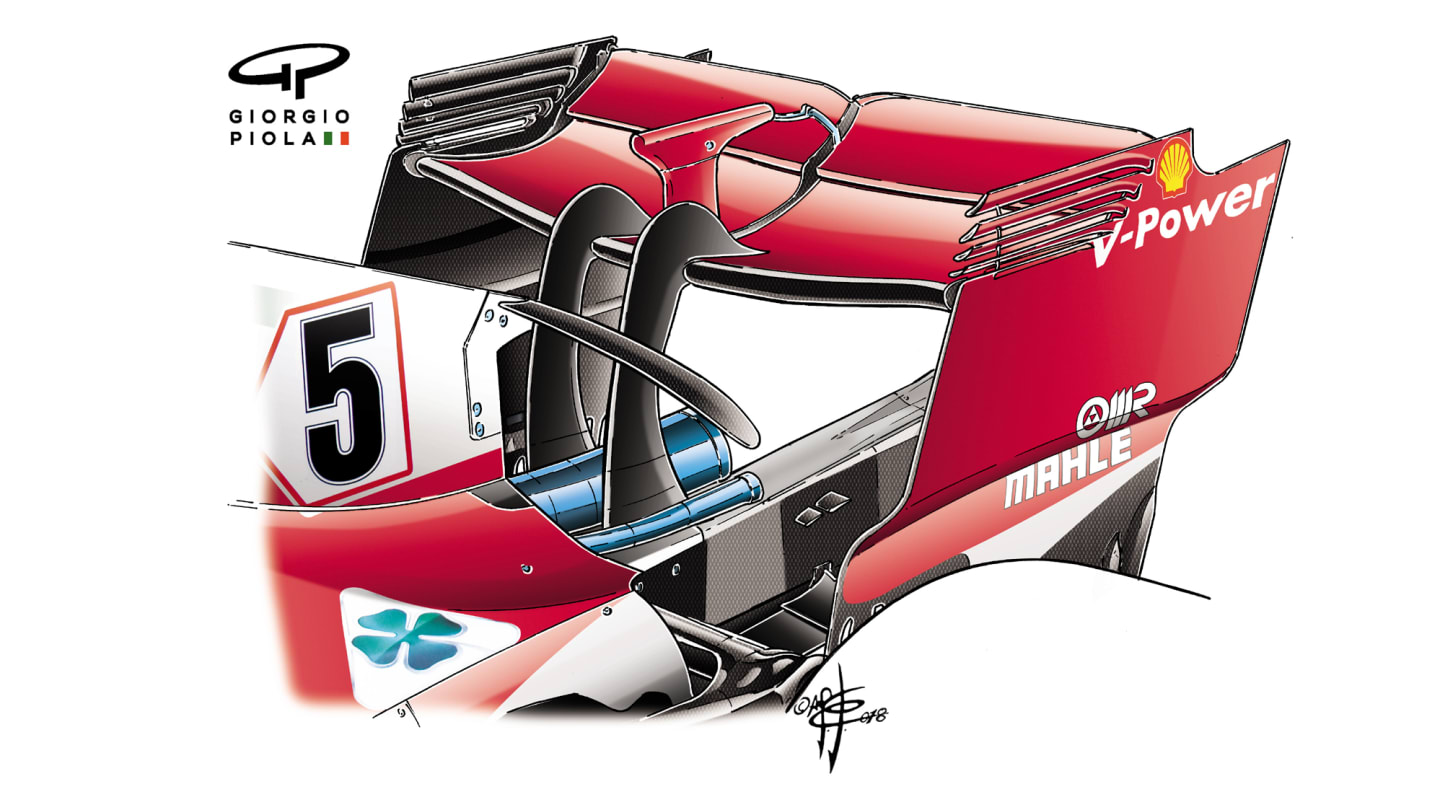
Ferrari (above) and Mercedes, by contrast, opted for spoon-profiled main planes, with thin outboard ends dropping down into a more generously-sized middle section. In this way, the most ‘draggy’ part of the wing – the outboard ends – can be minimised, while still generating good downforce from the more efficient central part.
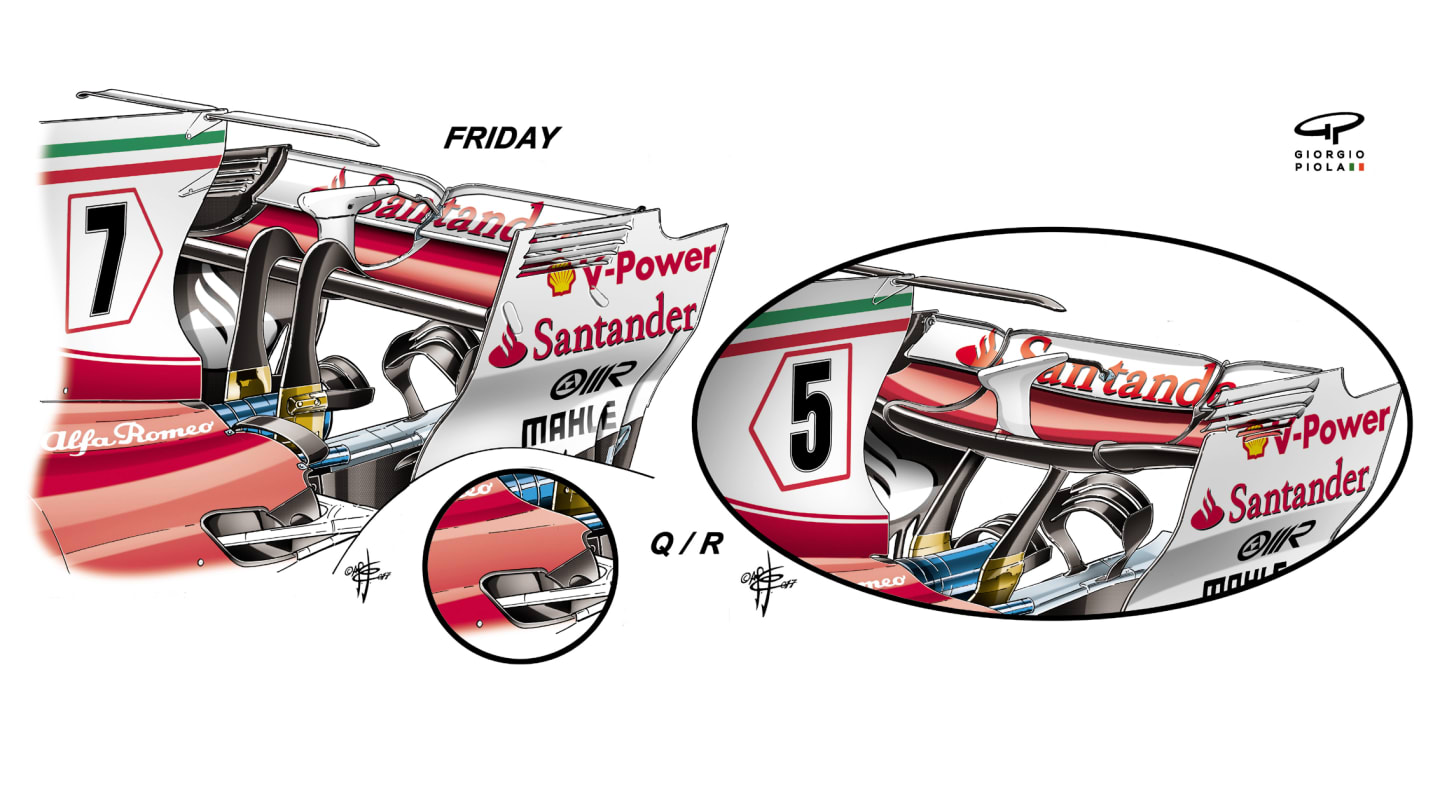
At Baku last year Ferrari back-to-backed a conventionally-shaped main plane (above left side) with a spoon-style version (above right side) and opted to qualify and race the latter. This year, they plumped immediately for a spoon profile. The Mercedes spoon rear wing ran with less angle than Ferrari’s but was quite similar in concept, albeit with serrations on the trailing edge of the main profile (below).
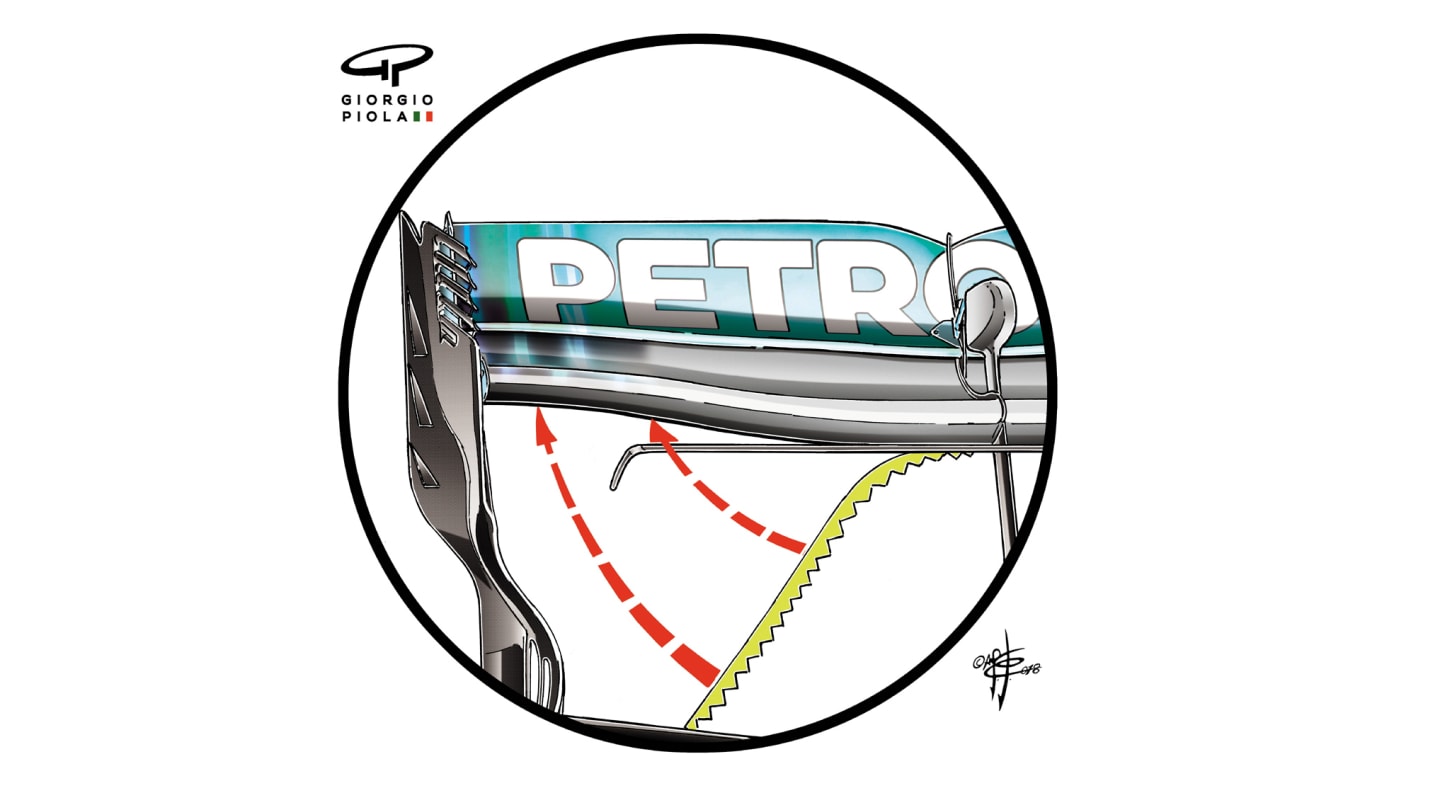
These different choices for the unique demands made for quite a different speed trap pattern to that normally seen in 2018. The Mercedes and Red Bull achieved quite similar terminal speeds, with the higher downforce Ferraris around 9km/h slower.
It should be said, however, all three cars however achieved similar overall levels of performance.
YOU MIGHT ALSO LIKE
News ‘It puts him amongst the all-time greats’ – Horner praises Verstappen after winning his ‘best and hardest championship’
OpinionF1 Unlocked TREMAYNE: Max Verstappen has now joined the exclusive ‘four titles’ club – but he was already one of the all-time greats of F1
News 'Max just doesn’t have a weakness' – Norris hails champion Verstappen as he seals title glory in Las Vegas
News Leclerc explains how ‘everything went wrong’ after early-race challenge for the lead in Las Vegas

